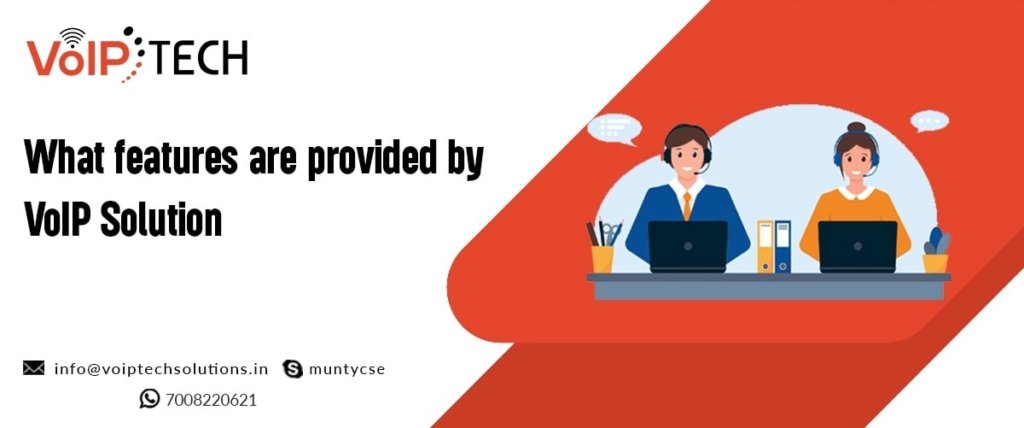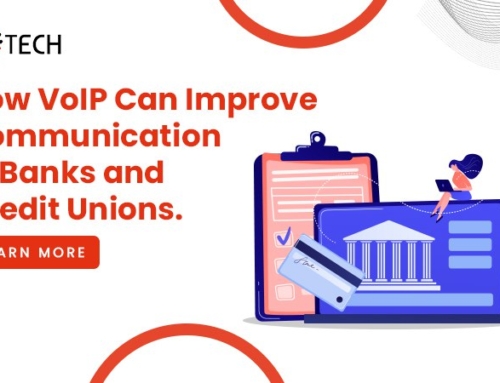If you need phone service but don’t want to set it up like a traditional phone or general phone setup, then VoIP Solution is best for you. Some companies provide VoIP solutions for every solution for your call center, small business, large enterprises, etc.
Technology changes every day, and it helps in the day-to-day lifestyle of our lives. Technology makes our lives easier. (Voice-over-Internet-Protocol) VoIP Solution providers are capable of far more than just making and receiving calls. Call holds, transfers, and forwarding may be handled by almost any provider, but more complex platforms provide predictive dialers, analytics, call management services, and more.
However, because the two VoIP providers do not offer a similar feature set, you’ll have to decide which features are beneficial for you and which type of VoIP technology you need.
What is VoIP?
A VoIP is an internet-based technology that allows you to send and receive text messages and phone conversations using a broadband connection rather than a traditional phone or landline connection. This means that you can use your VoIP number like any other phone number as long as you have an internet connection. A VoIP phone is provided with a VoIP number.
VoIP works by delivering your voice audio over the internet as data. In the past, VoIP numbers were commonly associated with real phones that were connected to the internet via an ethernet wire. These days, you may use an app on your smartphone to make calls and send messages with your VoIP number.
Features of VoIP Solution in business
Call analytics
It is the collection, analysis, and recording of incoming and outgoing call data to improve performance and customer satisfaction. It is carried out in real-time, and key performance indicators (KPIs) are frequently employed to track and visualize certain data.
Auto Attendant
An auto attendant is a menu system that assists businesses in answering and routing calls to the appropriate location. There is no need for any physical agent, physical telephone, or landline.
Call Forwarding for Busy People
When your line is busy, busy call forwarding automatically transfers your calls to another representative. It saves time inefficiently. Never let an urgent call go unanswered. Regardless of where your employees are located, resolve customer complaints.
Calls from office phones are forwarded to mobile phones or other devices that have been specified. This feature enables you to receive calls from anywhere and maintain contact with consumers.
Conferencing Technology
Businesses can now use their VoIP business phones to conduct audio or video web conferencing. For companies that operate remotely, these solutions are becoming increasingly vital. Even when some employees return to the office, several companies are experimenting with hybrid jobs.
Conferencing technologies that allow you to communicate with team members who are located in different areas are no longer a gimmick. You’ll need sophisticated VoIP phone solutions that allow you to have conferences with both in-person and remote staff as an increasing number of people in the workforce hunt for remote job opportunities.
Call queuing
Inbound and outbound callers are routed to predefined queues rather than being directed to a specific line and placed on hold manually. Each caller is advanced in the sequence in which they made their call. While they wait, they will frequently hear pre-recorded messages or jingles.
This feature of the VoIP solution is very handy for companies that receive a large number of calls and don’t have enough agents to handle all of them at once. The procedure enables calls to be grouped promptly and efficiently and forwarded to the appropriate agent.
Call recording
A call recording is great if you want to be confident in everything communicated during a phone conversation. Transcription communicates words, but you might deduce vital information from the tone of voice or the duration of pauses in a tape, which you might miss if you merely read about what was said during the call.
Speed Dial
Speed dial allows members of an organization to contact a critical party in a matter of seconds with just a few clicks. This VoIP feature allows your company to communicate with clients, vendors, other departments, or anybody else you need to contact without wasting time looking for their phone numbers in emails and papers.
Faxing in the Digital Age
Not every firm has the space or even the funds to purchase physical fax machines. Even so, some contacts still require faxing or rely on the capacity to send documents to you via fax. As a result, certain VoIP services allow businesses to transmit and receive faxed information over the internet, even directly to your office email.
This method can also help to reduce paper waste, which is beneficial to the environment.
Chat in real-time
Chat in real-time is becoming increasingly important to a rising number of organizations. Although voice mail is used by many businesses, many callers who encounter it do not leave a message. Meanwhile, live chat features allow clients to feel heard and appreciated.
Furthermore, most clients prefer to be assisted by a real person rather than an AI chatbot. Furthermore, callers want to communicate in real-time, so relying on a service like voice mail may be costing your company money.
Voice mail
Callers can leave messages for employees as they become available using basic voicemail functionality. Advanced voicemail modules, on the other hand, include custom greetings and automated transcription functions that convert voicemail recordings to text.
Call Pulling
A phone conversation can be effortlessly transferred from one device to another using call pulling. You may switch devices and keep chatting.
You can, for example, transfer an ongoing call from your desk phone to your smartphone without the other person realizing it.
Call screening
Call screening assists you in deciding whether or not to accept or reject an incoming call. Caller IDs are used to determine which calls should be declined, accepted, escalated, or sent to voicemail.
Crank calls, spam, and other unwanted calls are reduced by using call screening software. Agents can also use it to prioritize calls and accept just those that are of high importance on their phones or devices.
Caller ID
Caller ID reveals critical information about callers before anyone on your team picks up the phone. The user’s name and phone number are standard information. The city and state from which the individual is calling can also be included.
This is useful for preventing calls from unknown or anonymous numbers. Outbound caller ID also allows extension users to choose which ID they want to use while making a call. Anyone who uses their smartphone for work will benefit from having a caller ID.
IVR
Callers interact with a company’s real-time speech menu using Interactive Voice Response (IVR). Callers can solve their problems by pushing digits on their phones or speaking vocally.
Switchboard for VoIP
A VoIP switchboard is a control panel that allows you to receive, send, and transfer internet calls. You can keep conversations going even when participants are on the move using this functionality.
In the above, we have discussed the features of VoIP solutions, before choosing to look at the above-discussed features.
Our VoIPTech solutions provide another few steps for you before choosing or making a purchasing decision. You should look towards the following steps.
- What is the estimated number of people who will have access to this service tool?
- Is it more convenient for teamwork and communication?
- Is it a good financial investment?
- Is it assisting you in becoming more productive and effective?
- Will it be detrimental to your business if you don’t have the feature?
- Client or employee suggestions for how to use the feature?
You should continue forward with choosing the best solutions for your organization once you can answer a similar question about the VoIP features to invest in.







